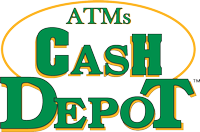 This article is brought to you by Cash Depot.
This article is brought to you by Cash Depot.
“Here is an uncomfortable truth: Smart safes were designed to protect cash and save you time, but not save you money,” said Sean Burke, CEO of Cash Depot.
While he said smart safes do save money on labor costs for cash management—around 220 minutes and $110 per week per register and 208 minutes or $104 per week on bank trips, according to Cash Depot partner data—that savings might not outpace the other fees and hidden costs associated with operating them.
“Many smart safe programs still charge for an armored courier, which costs about $111 per week. There are software, equipment and service charges, which can run as low as $350 per month or as high as $800, depending on the functionality and size of the machine,” said Burke.
Plus, you still have to pay bank fees, he added. “Your money is still being processed and deposited to your bank, which means a lot of the bank fees you were paying you will still be paying. And, if your smart safe provider isn’t charging you a fee for your next-day deposits, your bank probably is—which means yet another fee from your bank that you weren’t paying before,” he explained.
Smart safes also require manual register funding and change ordering, which means retailers spend around 31 labor hours per month, per register on these tasks.
“Smart safes fall short because they only offer one-way deposits and are single-function repositories. But true cash recycling systems allow your money to work for you instead of sitting idle,” said Burke.
He said Cash Depot’s BANK IN A BOX is a complete cash ecosystem, which offers start of shift register funding, breaks large bills into smaller bills, additional funds for registers throughout the day, store deposits and complete cash management – all while eliminating the bank (and its fees) as a middle-man.
The system reduces costs and labor hours—most stores average only five hours of labor per register a month when using BANK IN A BOX cash management system. When compared to the 31 hours with a smart safe, that comes out to $700 per month in savings, Burke said.
“BANK IN A BOX reduces or eliminates fees for next-day deposits because retailers pay a flat fee based on their daily deposits minus the money dispensed out of the ATM from consumer withdrawals,” said Burke. “It also helps to offset cash management costs by providing additional revenue from add-on financial services like business deposits from local businesses and consumer services such as self-service bill payments, mobile top-ups, money transfers and more.”
“Altogether, BANK IN A BOX can reduce retailers’ cash management costs by 50% or more,” said Burke.
This is the second in a two-part series from Cash Depot. Read about the costs of next day deposits in part one.